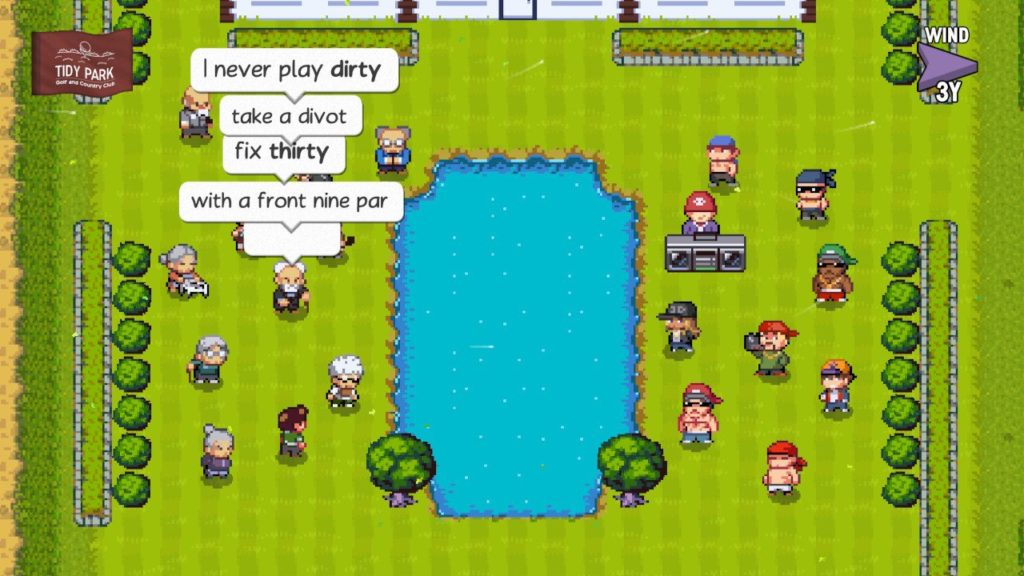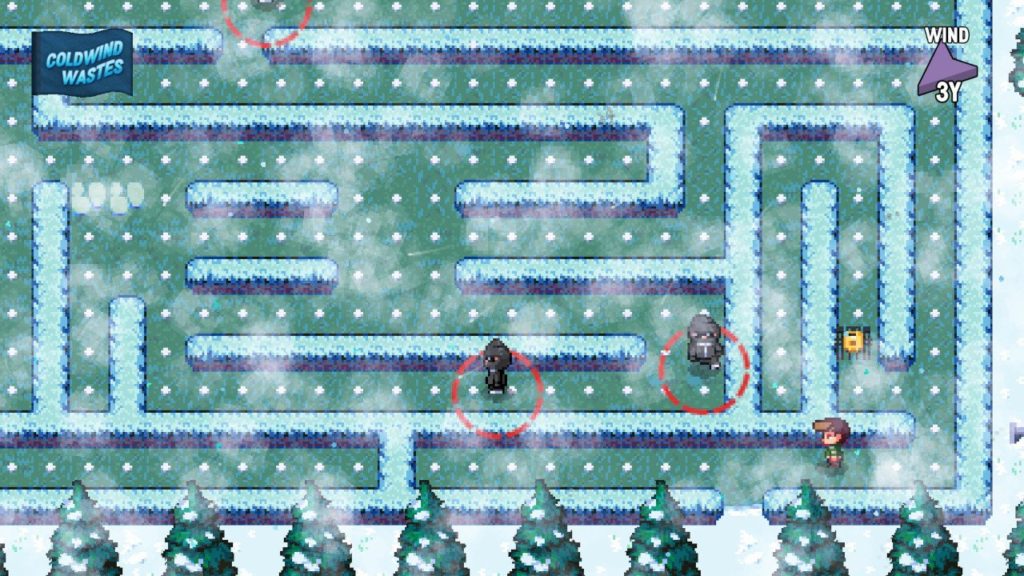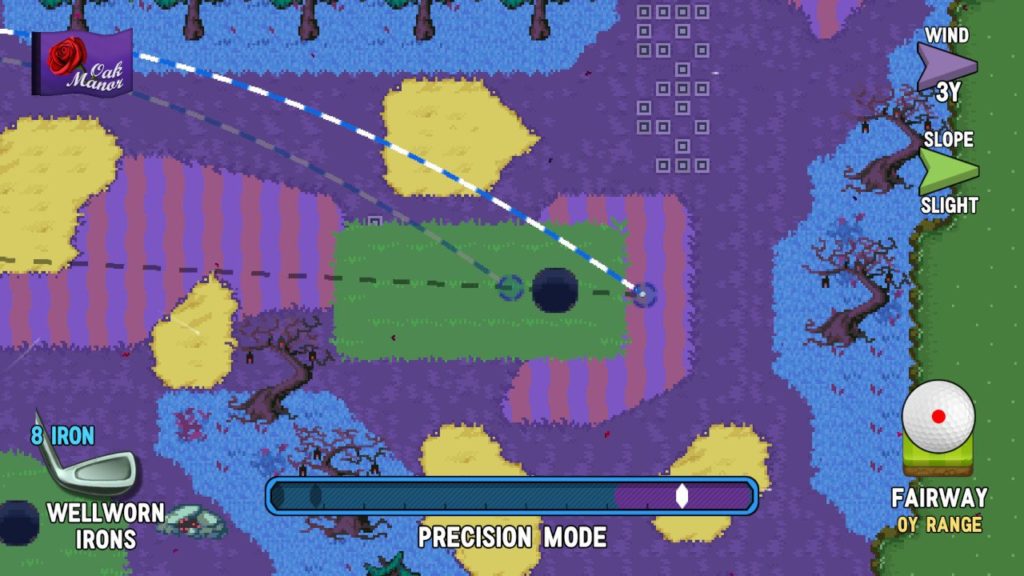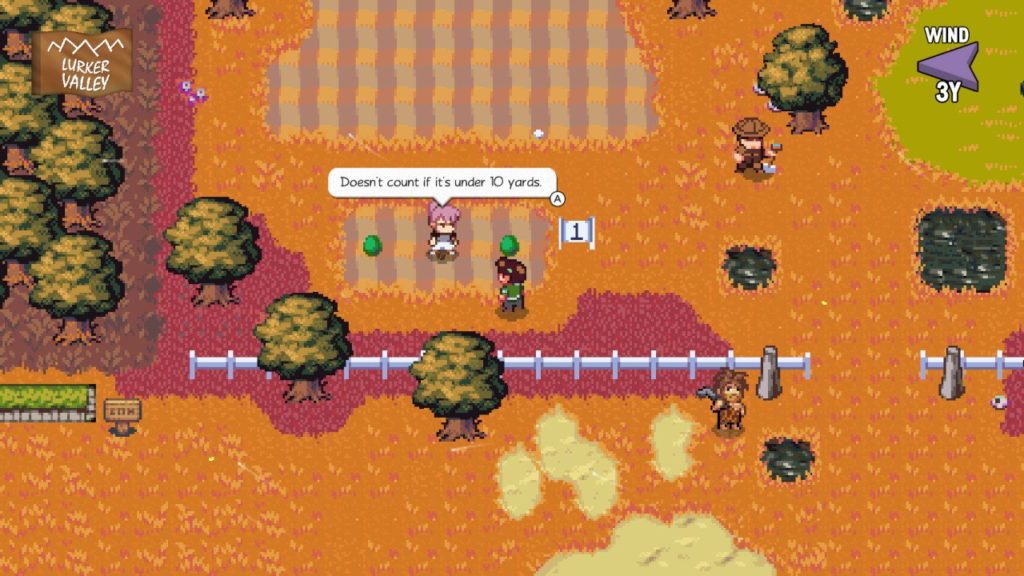- Genre: RPG
- Platform: PS4
- Also Available On: Windows, Xbox One, Switch
TL;DR
- Battle system is a phenomenal grid-based strategy system that heavily encourages the use of forced movement, ticking damage, and CC to eliminate enemies.
- Like The Stick of Truth, does a fantastic job of integrating the player into the South Park universe, from the visual design to the way the story is written, especially when they straight up go at things they know will offend a lot of people.
I’m not kidding when I say they are not being shy about offending people, especially those worth offending. For example:
Bahahaha this is fuckedhttps://t.co/2n2rTvtxYg pic.twitter.com/n2bS0rMwwi
— Dan Weiss (@schenksmill) June 9, 2018
This is a perfect example of why South Park as a multimedia franchise exists. They’re crass, they don’t care about poking at things that others will shy away from, and they do it all with their own unique style. Is it for everyone? Not really. However, if you’re a fan of this universe, The Fractured But Hole is another great entry that does more than just stand on its name for quality.
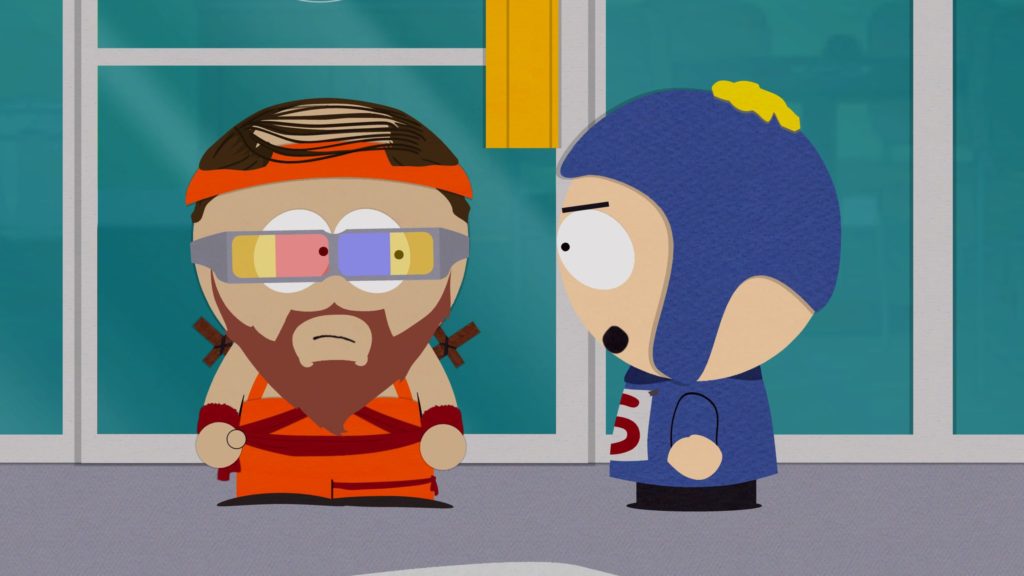
South Park can be a lot of things, but one of the keys to the entire experience is the visual style that has existed since the first season of the show. While past generations of games went with somewhat strange 3D representations of the world, the recent RPGs have gone all-in on making the unique style of the series work in real time in games. Just the world alone is impressive, but the flexibility of the character creation system while fitting into this universe is a technical marvel.
The player character itself can be composed of a ton of different pieces: hair, facial hair, makeup add ons, multiple outfit pieces, etc. They can all be mixed and matched with each other without limitation to create something that may or may not look good, but definitely is all your own, and definitely looks right out of the show. Even more impressive is that all of this is done in a way that preserves the character’s appearance in all cutscenes. You will always be seeing the character you wanted, and there’s no smoke and mirrors to keep it hidden in places where it would be inconvenient in a lot of games. It’s phenomenally impressive to see in action, and a testament to how much the tech around this game was built to BE South Park.
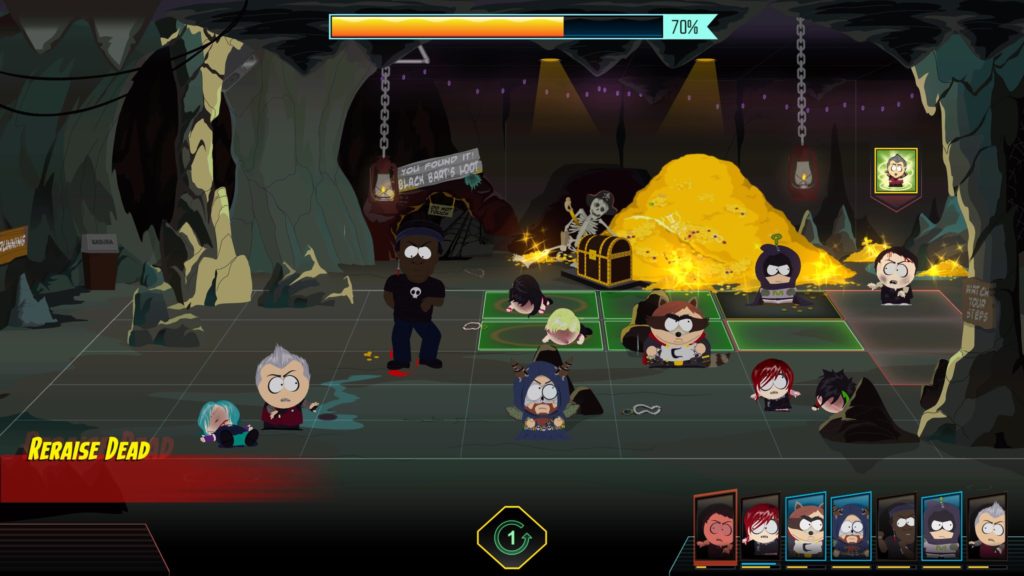
None of the visuals would matter if the game’s core battle system wasn’t fun, and they definitely also nailed that. While there’s some variety in size and obstacles, the core battle system is a turn-based system typically taking place on roughly a 5×10 play space. Player turns are individually ordered, and that comes into play in some of the abilities at your disposal. Abilities all have some grid space they can cover, whether it’s a 1×1 melee attack, a line ranged attack, or AoE grids that can be placed anywhere. In a lot of ways it feels like placing magic attacks in the Disgaea series, and the strategy of where units are on the board is hugely important to maximizing each turn’s damage potential.
This is all backed up by some great effects beyond just simple damage. You’ve definitely got your typical DoT type effects like poison, burn, bleed, etc. However, this game places a heavy emphasis on relocation of enemies. Knockbacks, pulls, location switches, and more are available to let you line up enemies for your future unit turns to really turn up the damage potential. The turn ordering also comes in to play with some abilities causing turn loss or turn delay, allowing you to really lock down the enemy into not being able to take any actions. It’s a fantastic set of functionality that all combines to add a ton of depth to what could have been a really simple battle system. Despite all the depth, it’s also really easy to understand what’s going on, which allows the quick hitting battles to flow in a way that’s not typically of SRPG-style games.
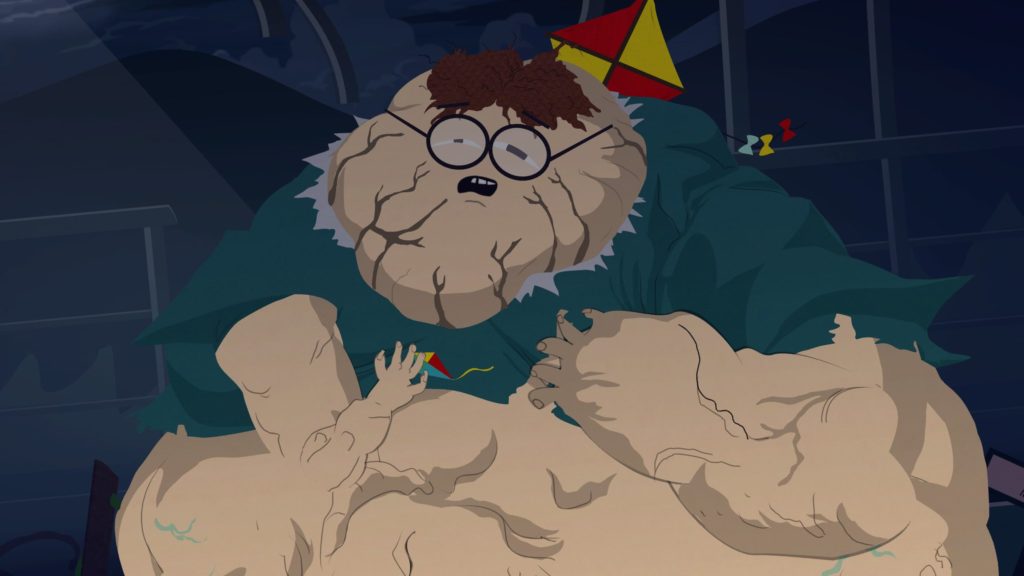
It’s also worth mentioning how much fun the bosses are in this game. Generally speaking they live under the same rule set as normal battles, but throw their own curves. Some of them are multi-space units that really change how the player has to position themselves both offensively and defensively. One boss had you not actively attacking it, but instead using knockbacks to throw smaller enemy units into the boss’ eating range to cause damage. Basically, while the core abilities are still there, the bosses throw enough curves to keep the player’s skill fresh in unique ways that aren’t just doing a battle with bigger numbers.
I’ll be the first to admit that the South Park wrapping on this game will definitely make this game a fairly niche product. It is full of completely inappropriate humor that will make you burst out in laughter if you don’t take it too seriously. Once you dig into it though, this game has a tremendously deep battle system that fans of RPGs in general will find a lot to love. The rest of the wrapping on this, from the side quests to gearing to environment exploration provide the rest of the trappings that RPG fans expect, and give this game a level of quality that we’re thankfully starting to see common in many licensed games.


